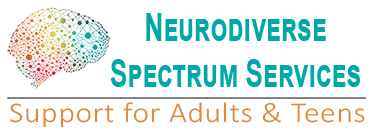Autism is a pervasive developmental disorder. This means it becomes apparent in early childhood and affects all aspects of a child’s development. The word Autism was first used as a diagnosis in 1943, by Dr. Leo Kanner (Kanner, 1943) of Maryland’s Johns Hopkins Hospital, after studying 11 children he diagnosed to have early infantile Autism. According to the Center for Disease Control, 1 in 59 children have been identified with Autism spectrum disorder. Prevalence of Autism in U.S. children increased by 119.4% from 2000 (1 in 150) to 2010 (1 in 68). (CDC, 2014) Autism is the fastest-growing developmental disability and is four times more prevalent in boys than in girls.
A diagnosis of Autism is given when three specific areas of development are significantly affected. These three areas are known as the “triad of impairments”. They are: social development, communication and repetitious behaviors and restricted interests (American Psychological Association, 1994, World Health Organizations, 1994). More specifically, people with Autism tend to be challenged by the ability to understand other’s perspectives or even attribute mental states to other people (often knows as mind-blindness or lack of Theory of Mind) and may display a lack of empathy. Communication challenges may range from no use of language to the lack of ability to have fluid, creative conversations. Repetitious behaviors (often referred to as “stims”) may be patterns of motor movements (fine or gross motor), repeated verbal lines (often called “scripting”) or involve unusual sensory stimulations Other children with Autism may have more usual interests but have an unusually restricted range of interests or become obsessive about a few interests.
The Autism Spectrum
Autism is a spectrum disorder, now more commonly referred to as Autism Spectrum Disorder (ASD). This means there is a wide variety of severity of Autism. Some people with ASD are highly verbal and conversational while others may not use any verbal forms of communication. Similarly, some people with ASD are very withdrawn from all forms of social interaction while others have families and jobs. People with ASD test as having a wide range of IQs. ASD has traditionally been thought of as a psychological or behavioral disorder. A diagnosis of ASD is still made on the basis of behavioral observation. There is currently no genetic, chemical or neurological test for Autism although all of these things have been shown to be instrumental in the etiology of the disorder. There is now a lot of evidence that ASD is primarily a neuro-biological disorder. That is, that the characteristic social, communicative and repetitious behaviors from which he disorder is diagnosed are the developmental consequences of a brain that is fundamentally wired and organized differently (e.g. Baron-Cohen, 2005). To date however, there is not clear, agreed-upon cause of Autism.
